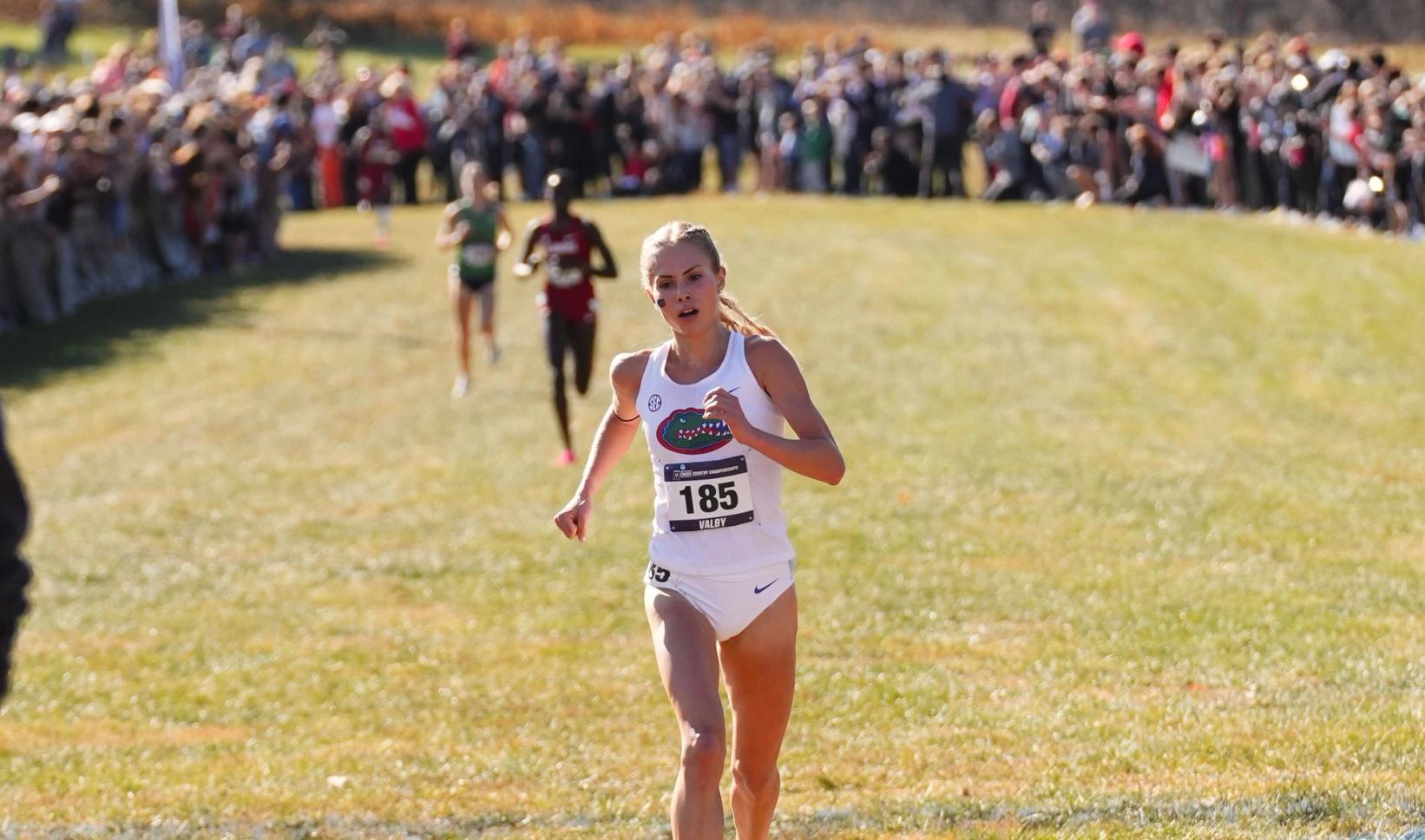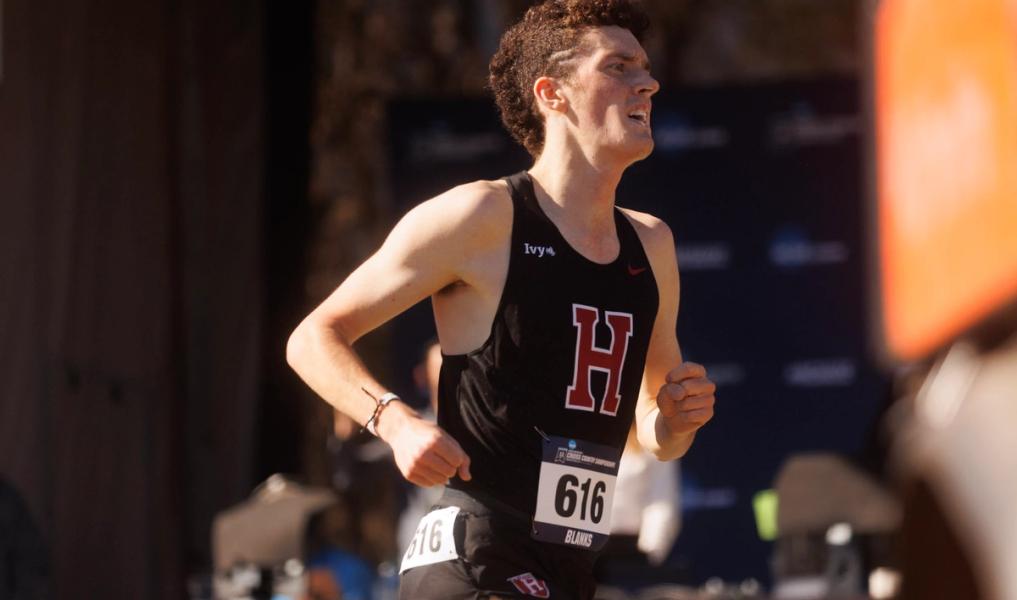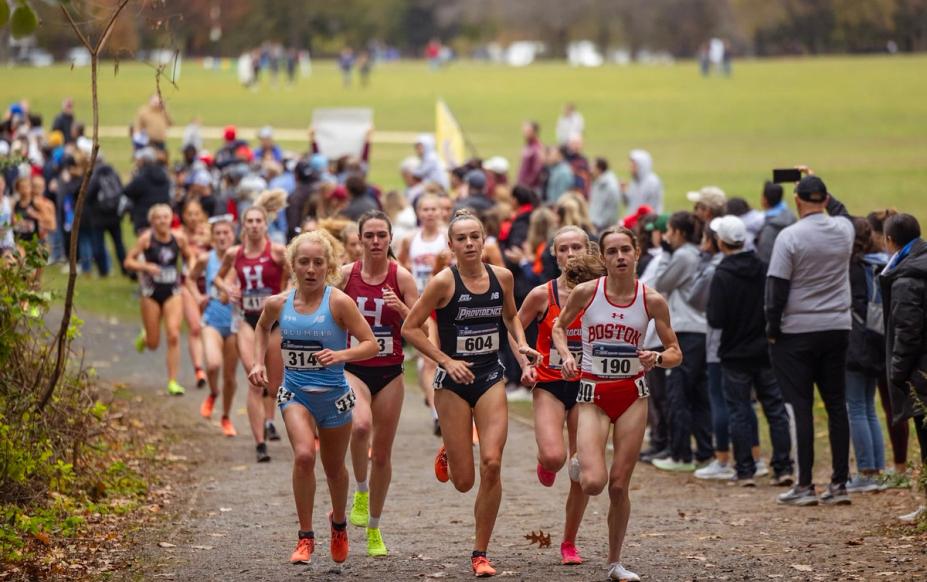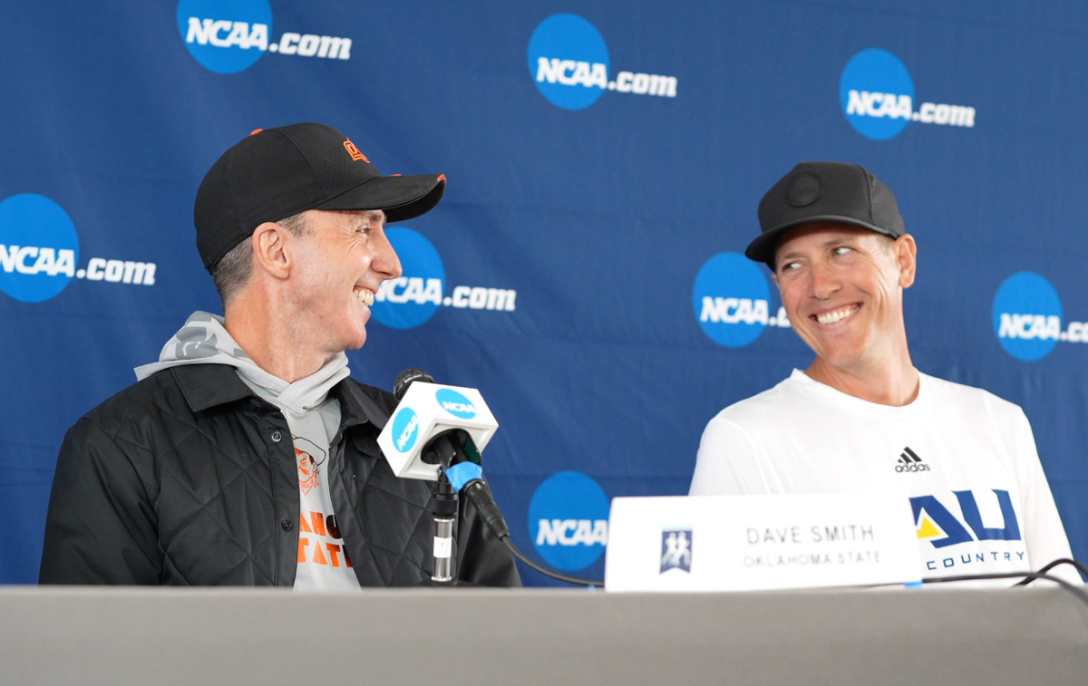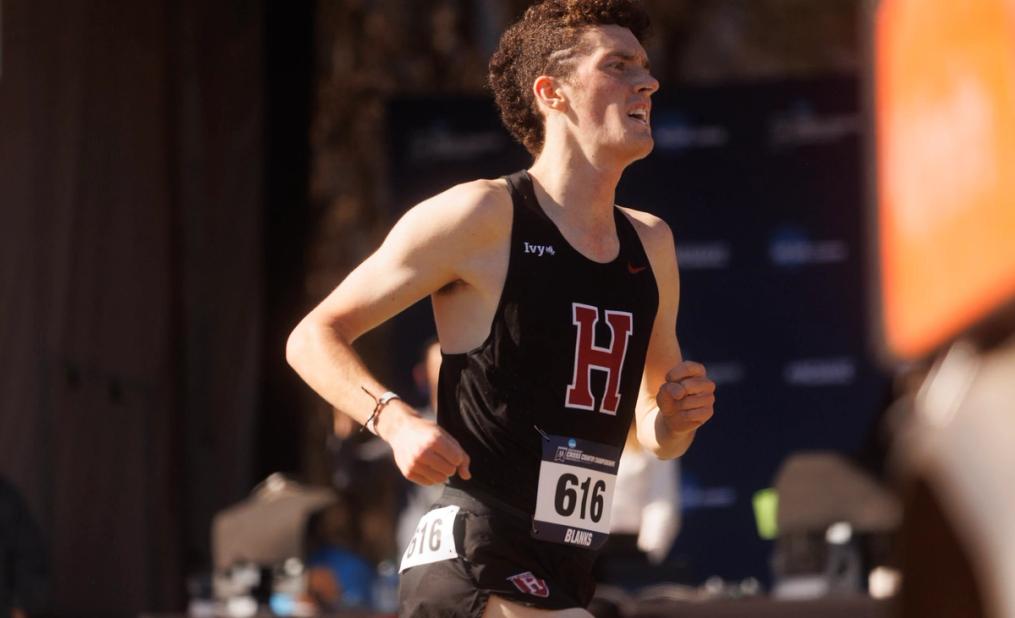By Owen Corbett
November 20, 2023
All good things must come to an end, but at least the 2023 NCAA cross country season ended with a bang on Saturday. One dynasty was cemented, another was taken down by an all-time performance, and undefeated individuals punctuated their great seasons. Before we begin the countdown to the 2024 edition (November 23rd, 2024 in Madison, Wisconsin… mark your calendars), let's put a bow on this year’s championships with the biggest takeaways from the season’s final meet
Oklahoma State’s Historic Performance
After the race, Oklahoma State coach Dave Smith said that his men’s program had to beat “one of the greatest teams all-time in the NCAA” and then clarified, “not just in cross country, but in all sports” to win this title, the program’s fifth - and fourth in the last 15 years. The Cowboys seemed to know that it would take a historic performance to unseat a Northern Arizona team that had won six of the past seven titles, and they put together the right race to do it. The reason why cross country is such a volatile sport is that it often depends on five different athletes all having good days when it counts, with very little room for error. Going into the race, the Cowboys' upside was sky-high. – However unlikely it was to actually play out this way, they had four runners that could be a threat to finish top ten. That didn’t quite happen, but they came pretty darn close.
Over the past 84 editions of the men’s race at NCAA Nationals, only 13 saw winners with lower point totals than OSU’s 49, but the Cowboy’s five-man depth is where they stand out among the greatest teams in history. Alex Maier, Oklahoma State’s fifth man, finished in 15th on Saturday, a feat that has only been matched four times.
- 2003 Stanford: The Ryan Hall-led Cardinal put four men in the top six, and six in the top 13 on their way to a stellar 24 point performance. Their 150-point margin of victory is a record that may never be challenged, their fifth runner finished 12th on the day.
- 1996 Stanford: Probably the closest comparison to this year’s Oklahoma State team: both teams’ top runners finished fourth, both had three runners in the top ten, and both teams’ fifth runners finished 15th. The ‘96 Cardinal scored 46 points, topping fellow heavyweight Arkansas (74) who also put three runners in the top ten.
- 1981 UTEP: On their way to a record fourth straight national championship, the University of Texas-El Paso Miners put together – unquestionably – the most dominant national championship performance in history. They scored 17 points by sweeping the top three spots, and their fifth runner finished eighth.
- 1944 Drake: In the first national championship after World War II, the Drake Bulldogs scored 25 points by putting five men in the top 14 of the four mile championship race.
More recently, we saw NAU put four men in the top nine of the 2020* championships, but their fifth man, Brodey Hasty, came in 44th. The sixth year senior was Northern Arizona’s fifth man again on Saturday but crossed the line in 25th, equalling his career best finish from 2022. The Lumberjacks’ 60 point performance from three seasons ago was bested by Oklahoma State this past weekend as the Cowboys scored the lowest total since 2005, when Wisconsin had six men in the top 18 on their way to 37 points, with their fifth man coming in 17th.
*the 2020 NCAA Cross Country Championships were staged in March of 2021 due to the COVID-19 pandemic.
NC State Defies The Odds
Great teams find a way to win championships, and that’s what the NC State Wolfpack did on Saturday. Just the day before the competition, it was announced that Kelsey Chmiel (3rd at 2022 NCAAs) would be unable to run, meaning that every other runner would have to step up in her place. The problem was that Chmiel had been the most consistent runner on the Wolfpack team all year. Their other top runners, Amaris Tynnismaa (9th at 2022 NCAAs) and Samantha Bush (15th at 2022 NCAAs) had struggled with injury and superstar Katelyn Tuohy (1st at 2022 NCAAs) had been just shy of her dominant 2022 form. And despite Tuohy coming down with an illness the week of the competition, and not being at her best on race day, NC State managed to best their competition by the slimmest of margins on the day that it mattered most.
The difference-maker for NC State was their impressive class of newcomers that helped deliver their third straight national championship in Charlottesville. True freshman Leah Stephens and redshirt freshman Grace Hartman held off late charges over the final kilometer on Saturday that secured their team’s one point win. Stephens ended up in 43rd place, beating out two athletes by less than one tenth of a second. Similarly, Hartman managed a 63rd place finish, only half a second ahead of another competitor. In a race that was won by only one point, the young Wolfpack runners embodied the adage that every place counts.
Earlier in the season, Jonathan Gault of LetsRun.com compared NC State’s 2023 season to the 1997-98 Chicago Bulls of The Last Dance fame, but if their top ranked recruiting classes can step into the spotlight of soon-departing veterans, it may end up closer to Chicago’s 1992-93 season, the conclusion of their first three-peat.
It’s Not Easy Being The Best
During the celebration of NC State’s “upset” win in Charlottesville, Coach Laurie Henes recalled that at last year’s nationals pre-race press conference, the coaches were asked if they would rather be the favorite or the underdog, and every coach answered with the latter. She can now even better answer the question after experiencing both situations in the past two years.
The 2022 Wolfpack were a heavy favorite, and they backed it up with a win. This year, however, after solid but injury-asterisked team performances all year, NC State came into NCAAs ranked behind the ascendant NAU women’s squad. A number one ranking can be a mixed bag: on one hand, you’re presumably the best team, which however obvious it sounds, typically means you’ve got the best shot at winning; but it also comes with an enormous target printed on the backs of each of your runners’ singlets, on top of weighty expectations.. Just ask the 2019 Lumberjack men, a squad that many thought was the best team in a stretch where NAU won six titles in seven seasons. It was the only team that failed to take home the trophy. NAU suffered that fate again this year, in both races.
This isn’t the beginning of the end for NAU. Top recruits and transfers won’t stop flocking to Flagstaff to train under Coach Mike Smith. They will continue to be the best cross country program in the nation year in and year out, and they will likely improve now that the women’s team has caught up to their male counterparts as they continue to try to become the first school to win both men’s and women’s team titles at the same championships since 2004 Colorado. It won’t be a surprise if both squads find their way to the top of the rankings during the 2024 season, but just don’t expect that to guarantee a championship. There is a reason that there has only been one year since 2014 in which both the men’s and women’s titles were won by the top ranked team going into championship weekend (2021 NC State women/ NAU men): cross country is a sport of upsets, and that is why we love it.
Impact Of The Transfer Portal
As Parker Valby was being interviewed on the ESPN broadcast post-race, she seemed to be the most proud of her team’s fifth place finish in Charlottesville. Just one year after she made the trip to nationals without any teammates alongside her, the remade Florida “superteam” lived up to their offseason expectations. Similar to second place Northern Arizona, three of the Gator’s five scorers were transfers in their first year with a new program. The team could have even cracked the podium if New Mexico transfer Amelia Mazza-Downie (22nd at 2022 NCAAs) managed a finish of 177th or higher (Mazza-Downie dropped out on Saturday just after going through halfway in 77th). The transfer portal is a double-edged sword however, and just as it builds programs up, it also picks them apart.
Consider the two of the top three teams in last year’s women’s race, New Mexico and Alabama, who were hit hard by departures. After finishing second last year, the Lobo’s head coach Joe Franklin left to coach Louisville, and many of his top athletes left Albuquerque behind him. If they had kept their squad together however, another podium may have been in order. Alongside New Mexico’s individual qualifier Nicola Jansen (36th), former Lobos Gracelyn Larkin (13th for NAU), Aliandrea Upshaw (57th for NAU), Elise Thorner (75th for Florida), and Maisie Grice (76th for NAU) almost all improved on their performances from last year in Stillwater. That group would have scored the imaginary ex-Lobos 199 points, which would have been good for a third straight top four finish for the program.
Even more impactful, Alabama – 2022’s third place team on the women’s side – saw distance coach Will Palmer leave for the head cross country job at Florida over the summer, and two of the Crimson Tide’s top runners followed him. Flomena Asekol (14th at 2022 NCAAs) and Allison Wilson both scored for the Gator’s at this year’s championships, including a stellar sixth place finish from Asekol. Yet if both women had run in Alabama uniforms on Saturday, alongside fellow low sticks Doris Lemngole (2nd) and Hilda Olemomoi (4th), the Crimson Tide would have dominated their way to Tuscaloosa’s first NCAA cross country team championship to the tune of an 88 point score.
On the men’s side the impact of the portal was felt slightly less this past weekend, but it certainly made its mark. Texas’s Devin Hart (11th) helped his team to a seventh place finish on Saturday – one spot ahead of Hart’s former Stanford teammates. If Hart had still been sporting Cardinal red however, as he did for his 51st place finish at nationals last year, Stanford would have repeated their podium finish from 2022, and been just one point behind third-place BYU. Two spots behind Hart was Kirami Yego (13th), a 2022 All-American for South Alabama, who helped put Arkansas back on the podium after a 23rd place team finish last year in Stillwater.
A Truly International Sport
For the first time in NCAA cross country championships history, more than half of the top ten finishers in both fields were internationally born.
Men
- 2nd, Habtom Samuel, New Mexico (Eritrea)
- 3rd, Ky Robinson, Stanford (Australia)
- 4th, Denis Kipngetich, Oklahoma State (Kenya)
- 7th, Patrick Kiprop, Arkansas (Kenya)
- 8th, Brian Musau, Oklahoma State (Kenya)
- 10th, Fouad Messoaudi, Oklahoma State (Morocco)
Women
- 2nd, Doris Lemngole, Alabama (Kenya)
- 4th, Hilda Olemomoi, Alabama (Kenya)
- 6th, Flomena Asekol, Florida (Kenya)
- 7th, Billah Jepkirui, Oklahoma State (Kenya)
- 9th, Amina Maatoug, Duke (Netherlands)
- 10th, Maia Ramsden, Harvard (New Zealand)
In no way is international athletes being at the top of the NCAA a new phenomenon, but the trend is reaching places it never has before. There were 41 countries represented at Saturday’s championships, almost matching the 44 different U.S. states that were represented. Our own Kyle Merber went a little more in-depth on the topic in this past week’s edition of the Lap Count, but in summary, the NCAA provides a great opportunity for athletes that otherwise might not benefit from the resources of a top college program, and it elevates the overall level of competition.
Ironically, in a year where the top of the results were more international than ever, both Graham Blanks (Athens, Georgia) and Parker Valby (Tampa, Florida), call the U.S. home. This made 2023 only the second occurrence in the last twenty championships where both the men’s and women’s individual winners were American-born. The other was in 2021 as BYU products Whittni Morgan (née Orton) and Conner Mantz both hail from Utah.

Owen Corbett
Huge sports fan turned massive track nerd. Statistics major looking to work in sports research. University of Connecticut club runner (faster than Chris Chavez but slower than Kyle Merber).
